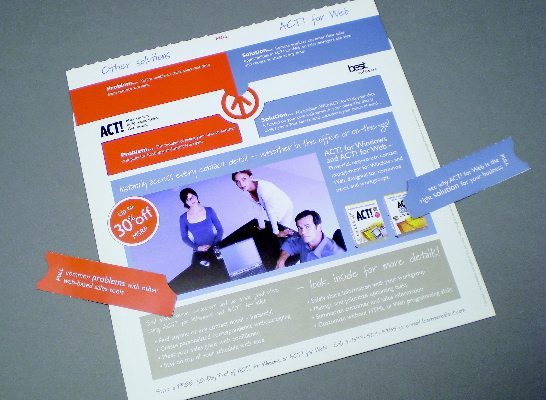Don’t work harder: Market smarter
It’s time for that marketing brochure to be updated or to create a direct mail campaign to generate new business, but you are questioning the expense. Before you even begin, there are key considerations that will help control your costs and create a greater impact.
It is no surprise that the most expensive factor in creating new marketing materials can be the cost of production. But, buyers beware: Reducing production costs is possible if you plan ahead.
A collaborative effort between the designer and the print vendor is key. Graphic designers will always have a vision when creating a project. Your job is to ensure your designer and print representative are in communication during the development process. A knowledgeable print representative should and will ask questions in order to determine options that can ultimately lead to cost-saving.
The List
Optimal results in a direct mail campaign can be attributed to a combination of things – cool eye catching designs, attention grabbing message, strong calls to action – but it all begins with the list. Are the addresses on your list accurate? Are you reaching the right audience?
All too often the mailing list is a last-minute thought pulled together after materials have gone to print. Supplying and processing mailing lists ahead of the print run will help reduce waste by establishing an accurate count number of your actual needs. Investing in a service to thoroughly cleanse your list can remove old records and improve accuracy. The cleaner the list is, the higher your return on investment.
Flexibility
Most innovative printers today are running various projects in combination to help offset costs. If you are able to provide flexibility regarding paper stock and printing time you can take advantage of an opportunity to print your marketing materials in combination with others. This helps save you money up front by sharing the set-up costs.
Finish The Job
A large portion of the costs incurred producing marketing materials derive from the set-up costs, the materials and the cost of labor or time it takes to put your project together. The more finishing services you can complete in-line, the lower your overall cost. For example, if you need 20,000, 16-page, 8.5 x 11 catalogs, think about sourcing it to a printer that can fold and glue the spine on a web press, opposed to a vendor that can only print flat sheets and then must separately fold and spine staple your catalog off-line.
Bigger Isn’t Always Better
In any print project the actual size or dimensions of your piece can have a significant impact on production costs. A larger postcard means less pieces fitting on a page. The more units you are able to fit onto a full-size sheet, the less time your job spends on the press, which results in savings. Additional factors to strongly consider are the postal regulations on each direct mailer. Reducing a standard 8.5 x 11 catalog to 6 x 10.5 can reduce postage by as much as $0.12 per piece depending on the weight.
The Digital Age
When you are printing a large volume and seeking a high quality finish, more conventional, off-set printing is the method of choice. But, advancements in technology now allow a greater level of customization with digital printing, which is typically best for short runs and quick turnaround times. Digital printing is perfect for a short run, four color, print on demand project, like business cards or postcards.
Managing the production budget of your marketing materials can easily get away from you and significantly increase costs with what appears to be small decisions or choices. Adding things like a fifth color or spot varnishes, choosing an out-of-the-ordinary paper stock, or even adding a small foil stamp can put you over budget.
As a former print production manager, I’ve been tasked with controlling costs on marketing collateral for many years. In looking beyond cost saving practices like size reductions, paper selection and combining production, one particular project comes to mind that is a great example of how planning with your team can save on costs.
The client had a limited budget, but needed 25,000 two-piece pull card window mailers, which traditionally require a great deal of handwork to put together. By involving the bindery supervisor in the design process, we created an automated one-piece mailer, with a zip strip opening and perfed-out windows on both sides. The automation not only saved roughly $3,000, the finished piece was fun and very interactive for the end user.
Whatever the project, it is always best to incorporate unique design elements and strong messaging in order to create effective marketing materials without going overboard on cost.
It all goes back to the importance of planning during the design stage and enlisting the expertise of those involved.




